This was published 5 years ago
The world's 50 most amazing objects you must see
By Brian Johnston
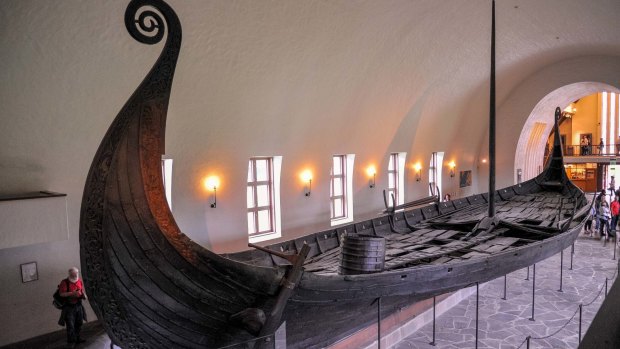
Viking Ship Museum of Bygdoy, Oslo, Norway.Credit: Shutterstock
We often frame travel in terms of destinations and must-see places and then, when we arrive, consult a list of must-see buildings. Sometimes, though, thinking small can be rewarding. What are the objects we ought to see?
They could be things that encapsulate the spiritual or artistic aspirations of humankind. They could be objects that changed our world view, or that make history tangible. They could simply be beautiful, or icons of a specific culture.
Drawing up a shortlist isn't easy. I could have written another whole list, and I expect my choices will be questioned. But I hope doing so makes you contemplate which objects you'd like to see, and encourages you along the road to seeing them.
ANCIENT ARTEFACTS
LUCY, ADDIS ABABA, ETHIOPIA
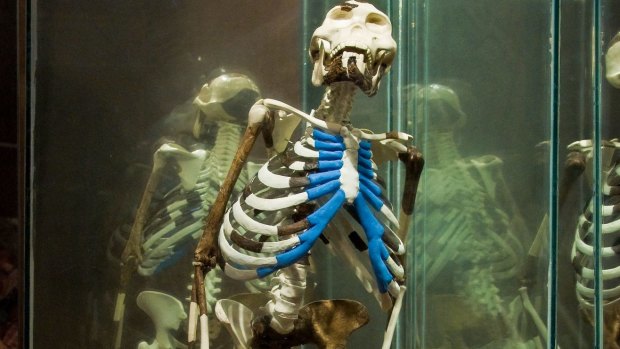
Credit: Alamy
Bone fragments and a skull that represent 40 per cent of a female hominid who lived 3.2 million years ago. Lucy supports evolutionary theory and adds immeasurably to our understanding of human origins.
WHERE
Basement of the National Museum, though only casts are shown. Lucy was discovered in Awash Valley in 1974 and named after a Beatles song. The fossil once toured but has remained in Ethiopia since 2013.
ESSENTIALS
The museum's other fossils include giant pigs and sabre-toothed cats. You can also admire arts and jewellery. Admission 50¢, open daily. See ethiopia.travel
MASK OF TUTANKHAMUN, CAIRO, EGYPT
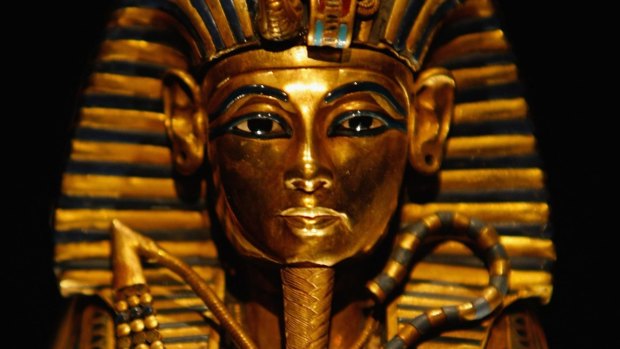
The ancient world's best-known artefact is the death mask of a boy-king from 1323 BC. It's made from two layers of gold inlaid with glass and gemstones, and shows Tutankhamun's face surmounted by a head-cloth with a cobra insignia.
WHERE
Museum of Ancient Antiquities. Head to the first floor for mummies and pharaonic treasures. Tutankhamun's tomb was sensationally discovered by British archaeologist Howard Carter in 1925.
ESSENTIALS
The museum houses thousands of items including coins, papyrus, sarcophagi, statuary and funerary boats. Admission $5, open daily. See egypt.travel
BRONZE BELLS, WUHAN, CHINA
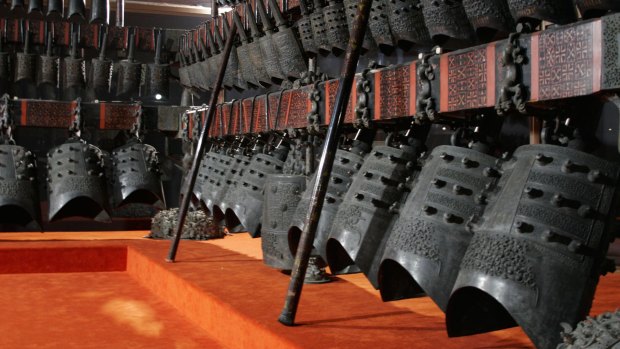
Credit: Alamy
Sixty-five bronze bells of varying sizes arranged in three rows and set on a wood-and-copper frame. Discovered in 1978 in the 4th-century BC Tomb of Marquis Yi, the bells represent the pinnacle of early music and bronze casting.
WHERE
Hubei Provincial Museum, in the Chime Bells Exhibition Hall. Ancient court music performed on replica bells shouldn't be missed.
ESSENTIALS
One of China's best museums of antiquities houses bronze vessels, porcelain, pottery, weapons and jade. Sixteen items are national treasures. Admission free, audio guide $4, closed Mondays and New Year's Eve. See hbww.org
BHARUT GATEWAY, KOLKATA, INDIA
The gateway and railings of a sandstone temple, covered in carved reliefs depicting the life of Buddha, gods and goddesses, and plants and animals. The 2nd-century BC Bharut style marks the beginnings of Buddhist narrative reliefs and provides important insights into Buddhist iconography.
WHERE
Indian Museum, formerly Imperial Museum, India's largest and oldest museum. The sculptures, excavated in 1873, are in its Bharut Gallery.
ESSENTIALS
The museum houses collections of antiques, armour, Egyptian mummies, Mughal paintings and fossils. Admission $10, open daily except public holidays. See indianmuseumkolkata.org
PARTHENON FRIEZE, ATHENS, GREECE
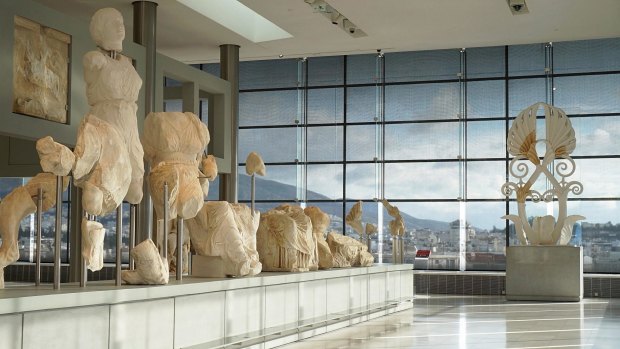
Credit: SHUTTERSTOCK
Thirty-six panels that once graced the Parthenon's exterior on the Acropolis, depicting the rituals, musical contests, athletics and horses of a festival in honour of goddess Athena. Every panel is a masterpiece of ancient Greek sculpture.
WHERE
Acropolis Museum, which has terrific Acropolis views. The frieze is in the top-floor Parthenon Gallery, which also pointedly displays replicas of the "stolen" Elgin Marbles panels.
ESSENTIALS
This ultra-contemporary museum displays 4000 objects and has a basement featuring ancient excavations. Admission $8 in winter, $16 in summer, open daily except public holidays. See theacropolismuseum.gr
GLITTERING PRIZES
TRANS-SIBERIAN RAILWAY EGG, MOSCOW, RUSSIA
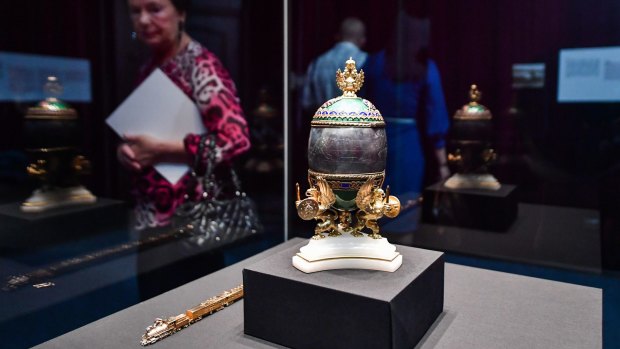
Credit: Alamy
An Easter egg made of enamelled silver, gold and onyx by legendary court jeweller Peter Carl Faberge. The hinged egg opens to reveal a miniature clockwork gold-and-platinum train with diamond headlights.
WHERE
Armoury Chamber inside the Kremlin. The egg was a 1900 Easter gift from Nicholas II to his wife Alexandra as the Trans-Siberian railway was about to be completed.
ESSENTIALS
The Armoury features the fabulous collectables of tsars, including regalia, gold-ware, armour, carriages and nine other Faberge eggs. Admission $15, free audio guide, closed Thursdays. See kreml.ru
REGENT DIAMOND, PARIS, FRANCE
Among a handful of famous diamonds, the perfect cut and flawless brilliance of this 141-carat stone make it the world's finest. It embellished Louis XV's hat and Napoleon's sword hilt, and is now set in Empress Eugenie's diadem.
WHERE
Galerie d'Apollon in the Louvre, which displays France's crown jewels. The Regent was discovered in India in 1698 and arrived in France in 1717.
ESSENTIALS
The Louvre features 35,000 works of art, ranging from ancient sculptures and world-famous paintings to glassware and furniture. Admission $27, closed Tuesdays and public holidays. See louvre.fr
GOLDEN RAFT, BOGOTA, COLOMBIA
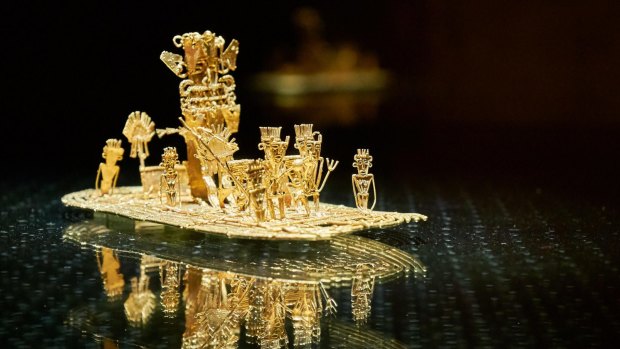
Credit: Alamy
Gold was a sacred metal for pre-Columbian societies such as the Andean Muisca people. The Muisca Raft, 600 years old, is an outstanding example of votive art and depicts a central figure surrounded by 12 others, two wearing jaguar masks.
WHERE
Second floor of the Gold Museum. The raft was found by farmers in 1969 inside a ceramic pot in a cave.
ESSENTIALS
Abundant gold objects make this the world's largest gold collection. Other artefacts are made of stone, shell and textiles. Admission $2, free Sundays, closed Mondays. See banrepcultural.org
CELLINI SALTCELLAR, VIENNA, AUSTRIA
An elaborate gold-and-ivory table setting depicting a ship and reclining male holding salt, and a temple and reclining women holding pepper. Its delicate shape and hand-hammered gold make it a great Renaissance masterpiece.
WHERE
The Kunstkammer, one of the world's best chamber-of-curiosities collections. The saltcellar was made for Francis I of France in 1543 and later gifted to the Hapsburgs.
ESSENTIALS
Great European masterpieces on canvas, ancient Greek and Roman art, coins, altarpieces and other bejewelled treasures are also shown. Admission $25, audio guide $8, open daily. See khm.at
JADEITE CABBAGE, TAIPEI, TAIWAN
A jade carving of a cabbage with two insects lurking amid its leaves mightn't sound special, but this exquisitely luminous artwork is one of Chinese civilisation's great treasures and a perennial public favourite.
WHERE
Third floor of the National Palace Museum. Arrive early to avoid tour groups. Part of an imperial consort's 1889 dowry in the Forbidden City, the cabbage was moved to Taiwan during China's civil war.
ESSENTIALS
This magnificent museum houses the world's best collection of Chinese art. Admission $16, open daily, English guided tours 10am and 3pm. See npm.gov.tw
RELIGIOUS RITES
GOBEKLITEPE, SANLIURFA, TURKEY
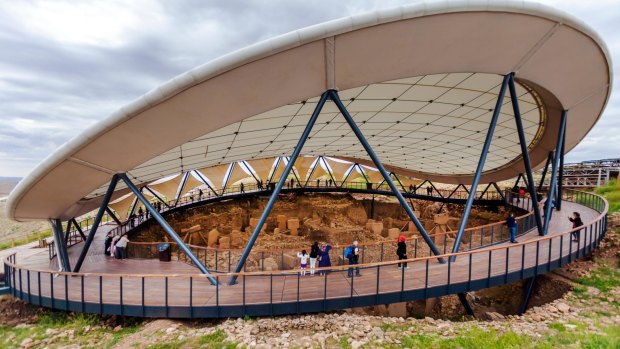
Credit: Shutterstock
The world's oldest known temple and monumental architecture of any kind. The series of megalithic circles covered with animal bas-reliefs was created 12,000 years ago. The discovery suggests hunter-gatherers were capable of significant building, overturning the assumption that temples only appeared after cities were created.
WHERE
Near Sanliurfa in eastern Turkey. Ongoing excavations began in 1996. The site itself was altered and added to over a millennium.
ESSENTIALS
The site has reopened after a lengthy closure and upgrade, with 2019 declared the tourism Year of Gobeklitepe. Admission $5.30, open daily. See gobeklitepe.info
DEAD SEA SCROLLS, JERUSALEM, ISRAEL
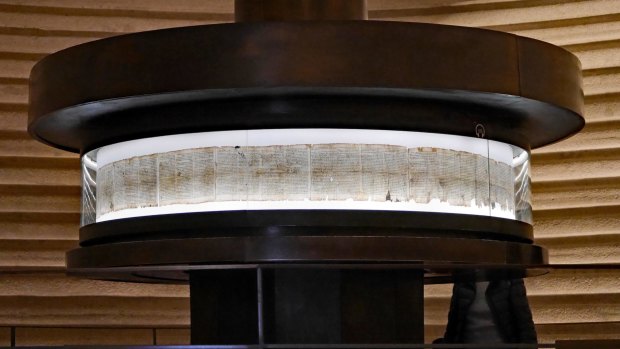
Credit: Shutterstock
Nearly 1000 manuscripts on parchment, written in Hebrew, Amharic or Greek two millennia ago and comprising some of the earliest Biblical texts and previously unknown apocrypha. They give remarkable insight into ancient Jewish life and its links to Christianity.
WHERE
Shrine of the Book Complex at the Israel Museum. The scrolls were found buried in earthenware jars in seashore caves in the 1940s and 1950s.
ESSENTIALS
The museum features a huge collection of archaeological and biblical artefacts, Jewish fine arts, and an outstanding sculpture garden. Admission $20, open daily. See imj.org.il
DAIBUTSU BUDDHA, NARA, JAPAN
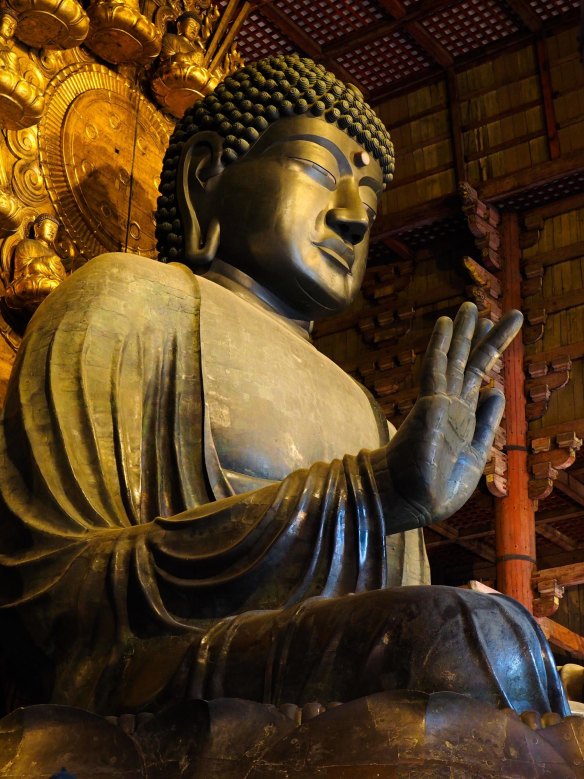
Credit: SHUTTERSTOCK
Japan's best-known giant Buddha statue, and the world's largest bronze Buddha, was first created in 752, though recast several times, and has rather more recent hands and head.
WHERE
Inside the Great Buddha Hall – until 1998 the world's largest wooden building – of the Todai-ji Temple complex. Nara's short stint as Japan's early capital saw the emergence of much of Japan's arts and its Buddhist religion.
ESSENTIALS
The temple has many sculptures, statues and masks exhibited in its Culture Centre. The complex includes historic villas and gardens. Admission $7.60, open daily. See todaiji.or.jp
SACRED RELICS, ISTANBUL, TURKEY
Some of the most sacred relics of Islam, most notably the Blessed Mantle and Holy Banner of the Prophet Mohammed (kept in a golden box under a silver canopy) plus his sword, bow and a signed letter.
WHERE
Sacred Safekeeping Rooms in the Third Court of Topkapi Palace. Some relics passed to early 16th-century Sultan Selim I when he conquered the last Abbasid Caliph. Others were acquired over subsequent centuries.
ESSENTIALS
The palace is crammed with Ottoman treasures including porcelain, jewellery, armour, robes and uniforms. Admission $16, respectful attire required, closed Tuesdays. See topkapisarayi.gov.tr
BOOK OF KELLS, DUBLIN, IRELAND
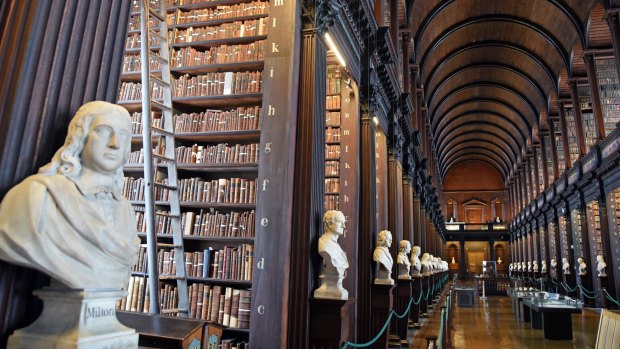
Credit: SHUTTERSTOCK
This 9th-century four-volume book of Gospels is perhaps the most famous of all medieval European manuscripts thanks to its rich decorative illuminations and masterful calligraphy, and is Ireland's pre-eminent treasure. Its pages feature gorgeous depictions of people, animals, mythical beasts and Celtic knots.
WHERE
Old Library at Trinity College, Ireland's oldest university. Open pages of two of the four volumes are on show, while the rest can be viewed digitally.
ESSENTIALS
Trinity College also has a Science Gallery, plus Zoological Museum particularly noted for its insect collection. Admission $22, open daily. See tcd.ie
HUMAN FACES
BUST OF NEFERTITI, BERLIN, GERMANY
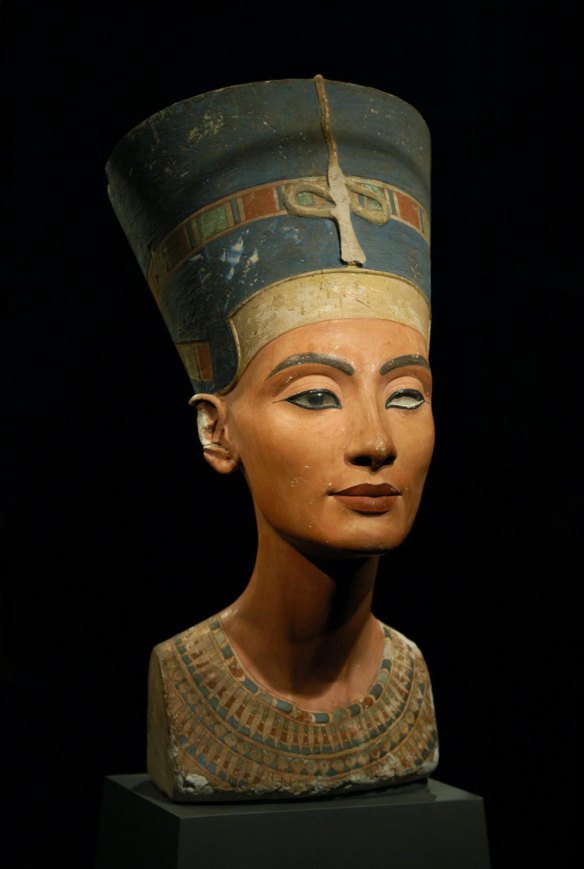
Credit: SHUTTERSTOCK
The crowned head of pharaoh Akhenaten's wife, crafted around 1345 BC from limestone covered in painted stucco. It's an icon of classical Egyptian art and feminine beauty – as well as of worldwide campaigns to have looted museum artefacts repatriated.
WHERE
North cupola of Neues Museum. The bust was discovered in the workshop of Thutmose in 1912 and was stored in a salt mine during WWII.
ESSENTIALS
The museum is stuffed with collections of classical antiquities from Europe and parts of Asia, including Egyptian papyrus, statuary and everyday objects. Admission $19, closed Mondays. See smb.museum
SHAHNAMEH MANUSCRIPT, DOHA, QATAR
The Book of Kings records the history and legends of the Persian Empire. This single page from a 1583 copy is by itself a masterpiece of Iranian art, depicting Shah Faridun disguised as a dragon to test his sons' courage.
WHERE
Museum of Islamic Art, a glorious water-bound building designed by architect I.M. Pei. The manuscript, recently acquired from a Harvard collector, is in the second-floor Art Gallery.
ESSENTIALS
The museum exhibits Islamic art from the 7th to the 19th centuries, including textiles, furniture, jewellery, porcelain and watercolours. Admission free, open daily. See mia.org.qa
BAZ BAHADUR MINIATURE, DELHI, INDIA
An 18th-century painting on paper from Hyderabad depicting 16th-century Sultan Baz Bahadur and his wife Rupmati, legendary in folklore for their mutual love. The richly-dressed couple rides horses along a lakeshore between trees. It's a masterpiece of miniature, one of the key forms of Indian painting.
WHERE
National Museum's ground-floor Room 12, which is entirely devoted to exquisite Indian miniatures.
ESSENTIALS
The museum has a vast collection of miniatures in all the significant Indian styles, and also exhibits decorative arts, coins, jewellery, manuscripts and armour. Admission $12.50 including audio guide, open daily. See nationalmuseumindia.gov.in
BENIN BRONZES, LONDON, BRITAIN
A series of plaques (actually brass) depicting richly-dressed kings, attendants and court figures, created in Benin City in modern-day Nigeria in the 16th century. The sophisticated artworks sparked a reconsideration of so-called primitive art and greater appreciation of Africa's cultural richness.
WHERE
British Museum. The plaques were seized in 1897 by British forces. Some will soon be loaned to a new museum now under construction in Benin City.
ESSENTIALS
This is perhaps the world's best all-round museum for world culture. Admission free, audio guides $12.60, open daily except over Christmas and New Year. See britishmuseum.org
MOCHICA PORTRAIT VESSELS, LIMA, PERU
Pottery vessels from northern Peru in the shape of heads depicting the Mochica people's social elite wearing earrings and bird-shaped headdresses, and notable for the detail of individual facial features.
WHERE
Room 3 at Museo Larco, a personal collection started in 1923. The portrait vessels are funerary offerings recovered from tombs.
ESSENTIALS
The museum has fine pre-Columbian arts, including a rather extraordinary erotic collection, and is one of few museums to allow visitors to walk among storeroom shelves. Admission $12.50, daily guided tours in English $4, open daily. See museolarco.org
MOAI, EASTER ISLAND, CHILE
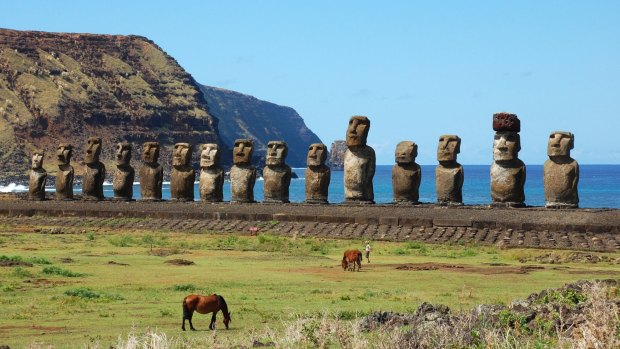
Credit: Shutterstock
Monolithic human figures with outside heads, most about four metres tall. Created between the 13th and 16th centuries by the Rapa Nui people, the moai are a remarkable artistic and engineering achievement, and probably honoured ancestors.
WHERE
Scattered at various locations around Easter Island, one of the world's most remote places. Half are at Rano Raraku from where the stone was quarried.
ESSENTIALS
Easter Island has wild scenery great for hiking, horse riding and mountain biking, as well as good surfing and snorkelling. Admission to Rapa Nui National Park costs $112 for 10 days. See chile.travel
TERRACOTTA WARRIORS, XIAN, CHINA
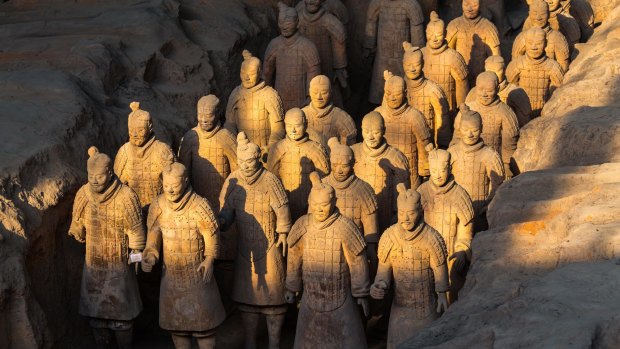
Credit: SHUTTERSTOCK
The 2000-year-old mausoleum of the first Qin emperor features serried ranks of 6000 life-size terracotta soldiers and horses in rigid battle formation. No two figures are the same, and each has a different facial expression and hair style.
WHERE
Some 40 kilometres east of Xian in Lintong District, in three covered pits. The sensational archaeological find was unearthed by farmers in 1974.
ESSENTIAL
The onsite museum exhibits pottery, bronze swans and bells and superb chariots recovered from the tomb. Admission $25, audio guide $8.30, open daily. Visitor numbers limited, so book in advance. See bmy.com.cn
SCIENTIFIC ENDEAVOUR
TYRANNOSAURUS REX, CHICAGO, US
This skeleton, nicknamed Sue, is about 67 million years old and is the largest and most complete Tyrannosaurus ever found. It has provided invaluable insight into dinosaur physiology.
WHERE
The Evolving Planet display at Field Museum, which covers 5 billion years of evolutionary history. Sue was discovered by palaeontologist Sue Hendrickson in South Dakota in 1990.
ESSENTIALS
One of the world's largest natural history museums has exhibits ranging from geology and fossils to Egyptian mummies and native American artefacts. Admission $33.50, free daily tours, open daily except Christmas Day. See fieldmuseum.org
GALILEO'S TELESCOPES, FLORENCE, ITALY
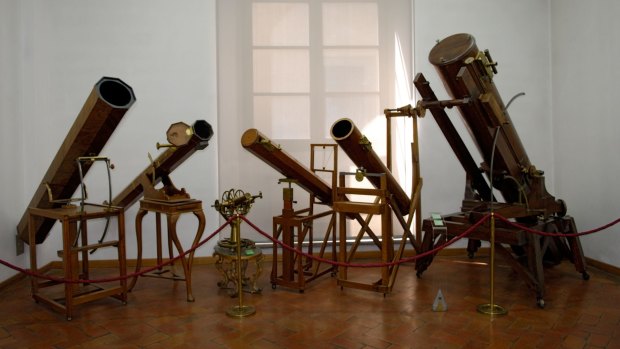
Credit: Alamy
Galileo Galilei's only two remaining telescopes, which he used for many astronomical breakthroughs, plus the lenses through which he discovered Jupiter's rings in 1609. The founder of modern astronomy fundamentally shifted our understanding of the solar system.
WHERE
First floor of the overlooked Museo Galileo near tourist-crammed Uffizi Gallery. The telescopes were made by Galileo from strips of wood and red leather.
ESSENTIALS
The museum exhibits terrestrial globes, experimental apparatus and equipment relating to Italy's significant contributions to chemistry and electricity. Admission $16, open daily except Christmas and New Year's Days. See museogalileo.it
GUTENBERG BIBLE, MAINZ, GERMANY
When Johannes Gutenberg invented moveable lead type it exponentially increased our capacity for written communication and intellectual exchange. Two original mid-15th-century Gutenberg Bibles feature coloured embellishments added to the print by illustrators.
WHERE
Under security glass in the Gutenberg Museum. Only 49 of the original 180 print run of Bibles remain worldwide. There are six daily demonstrations of a replica Gutenberg press.
ESSENTIALS
See other printing presses (including much earlier Asian examples) and displays of books and graphic arts. Admission $8, audio guide $5.50, closed Mondays and public holidays. See gutenberg-museum.de
EDISON'S LIGHT BULB, WASHINGTON DC, US
It's hard to appreciate how dark our world was before the appearance of the lightbulb. Great inventor Thomas Edison's first publicly demonstrated this lightbulb in 1879, and our nocturnal capabilities have never been the same since.
WHERE
Electricity Hall of the National Museum of American History, where you can also learn how Edison marketed his invention and how it transformed factories, homes and city streets.
ESSENTIALS
The museum owns the original Star Spangled Banner, Dorothy's ruby slippers, Lincoln's top hat and much more. Admission free, open daily except Christmas Day. See americanhistory.si.edu
DARWIN'S DESK, DOWNE, BRITAIN
Few books have influenced our world more than Charles Darwin's Origin of Species. His study at Down House is barely changed, with original furniture and some artefacts from the HMS Beagle providing a thrilling glimpse into the personal life of this giant of science.
WHERE
Down House in Kent on the outskirts of London, home of Darwin for 40 years until his death in 1882.
ESSENTIALS
You can also see the greenhouses and experimental garden beds where Darwin developed theories on plant reproduction and evolution. Admission $22, open daily, weekends only in winter. See english-heritage.org.uk
12 AUSTRALIAN MUST-SEES
NED KELLY'S ARMOUR
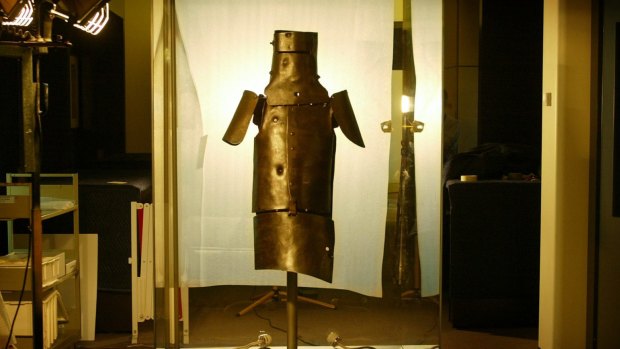
Ned Kelly's armour
A new gallery opens in Melbourne's State Library of Victoria in May featuring the bushranger's iron armour and other memorabilia such as his death mask. See slv.vic.gov.au
PHAR LAP'S HEART
The great racehorse met a mysterious end in 1932. His preserved, unusually large heart is one of the most sought-out exhibits in Canberra's National Museum. See nma.gov.au
EUREKA FLAG
The Eureka Centre in Ballarat shows the 1854 Southern Cross flag – future symbol of Australian democracy – that fluttered defiantly over rebellious goldminers. See ballarat.vic.gov.au
TASMANIAN TIGER
Check out the stuffed thylacine (and a stretched skin) at the Tasmanian Museum in Hobart for a sobering look at the impact European settlement has had on native creatures. See tmag.tas.gov.au
GALLIPOLI LANDING BOAT
One of the bullet-riddled 1915 lifeboats that ferried Australian troops ashore is preserved at the Australian War Memorial in Canberra. See awm.gov.au
BATAVIA'S HULL
The Batavia ran aground off Western Australia in 1629. A mutiny and massacre followed. Inspect a section of the notorious Dutch ship at Fremantle's Shipwreck Galleries. See museum.wa.gov.au
CONSTITUTION ACT
Our nation's most important document is irregularly shown in Canberra's National Archives. Otherwise, admire a facsimile of the act that created Australia. See naa.gov.au
BIONIC EAR PROTOTYPE
This 1978 bionic ear, seen at the National Museum in Canberra, represents Australia's impressive – but often unlauded – contribution to scientific endeavour. See nma.gov.au
ROYAL FLYING DOCTOR SERVICE AIRCRAFT
Head to Darwin to clamber inside a former Pilatus PC 12 aircraft, fully fitted out with medical equipment. See rfdsdarwin.com.au
BRADMAN'S CRICKET BATS
Adelaide Oval displays 50 years of memorabilia associated with history's greatest batsman, including bats and trophies. See adelaideoval.com.au
TRANSPORTS OF DELIGHT
These remarkable objects represent great achievements in travel.
WHEEL, LJUBLJANA, SLOVENIA
For most of history the wheel has proved key to getting around. Ljubljana City Museum displays the world's oldest wooden wheel, thought to be about 5000 years old. See mgml.si
STIRRUPS, SHENYANG, CHINA
The 3rd-century wooden, worn stirrups in Liaoning Provincial Museum remind us that their early invention in China – and later arrival in Europe – transformed horse-riding and warfare. See lnmuseum.com.cn
GOKSTAD SHIP, OSLO, NORWAY
Get close enough at the Viking Ship Museum to see details of the world's best-preserved Viking ship, built in the 9th century for a chieftain whose treasured possessions are also showcased. See khm.uio.no
BEHAIM GLOBE, NUREMBURG, GERMANY
The Earth Apple at the German National Museum was out-of-date soon after its 1492 creation thanks to Columbus' discoveries, but is the earliest surviving terrestrial globe. See gnm.de
AMBASSADOR'S COACH, LISBON, PORTUGAL
Nothing new about pimping your ride, as this 1716 royal Portuguese coach demonstrates. It's a wonder in wood, ivory and silk brocade, and a magnificent status symbol. See museudoscoches.gov.pt
LOCOMOTION NO. 1, DARLINGTON, BRITAIN
The engine that hauled 600 passengers at 24 kilometres an hour along the world's first public railway line in 1825 is preserved in Head of Steam museum. The "steam horse" was created by George Stephenson. See darlington.gov.uk
SPACE SHUTTLE, CAPE CANAVERAL, US
The most thrilling exhibit at Kennedy Space Centre is Atlantis, accompanied by interactive space-shuttle exhibits and a simulator that recreates the first five minutes of take-off. See kennedyspacecenter.com
DETOUR TO THE DARK SIDE
While most objects celebrate cultural achievement, some encapsulate the worst of human nature.
TOLLUND MAN, AARHUS, DENMARK
This fabulously preserved bog man lived 2300 years ago until strangled with a cord, a victim of either murder or human sacrifice. Gazing into his face is unnerving. See museumsilkeborg.dk
AZTEC SUNSTONE, MEXICO CITY, MEXICO
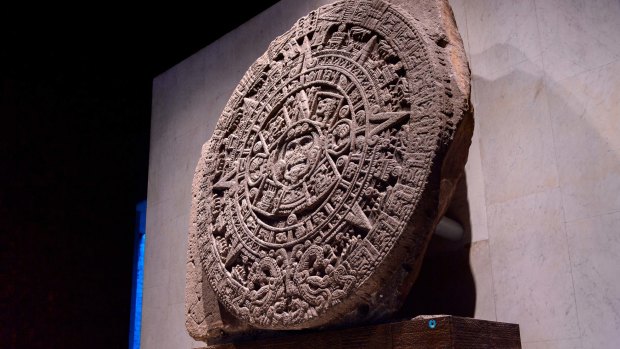
Credit: SHUTTERSTOCK
This famous Aztec object is an early 16th-century sculpture in the National Anthropology Museum, depicting a deity wielding a sacrificial knife and human heart. See mna.inah.gob.mx
DOOR OF NO RETURN, DAKAR, SENEGAL
One of 20 slave houses on Goree Island remains from the 18th-century slave trade. The doorway towards the slave ships symbolises institutionalised inhumanity. See visitezlesenegal.com
FRANZ FERDINAND'S AUTOMOBILE, VIENNA, AUSTRIA
The 1914 assassination of Austria's heir to the throne precipitated World War I. See his bullet-damaged car and blood-soaked uniform at the Museum of Military History. See hgm.at
GUERNICA, MADRID, SPAIN
Of all war paintings, this one by Picasso in Museo Reina Sofia has the most impact. The vast 1937 anti-Spanish Civil War canvas is a potent depiction of violence and chaos. See museoreinasofia.es
DIARY OF ANNE FRANK, AMSTERDAM, NETHERLANDS
Thirteen-year-old Anne Frank hid from the Nazis for two years before dying in Bergen-Belsen concentration camp. See her famous red-chequered dairy at Anne Frank House. See annefrank.org
Sign up for the Traveller Deals newsletter
Get exclusive travel deals delivered straight to your inbox. Sign up now.